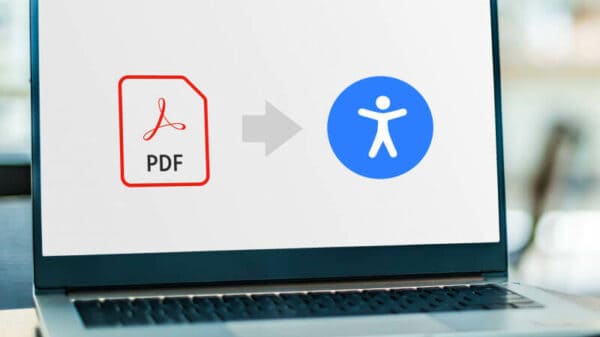Why would you need to or want to convert documents from one format to a PDF? The PDF file format has many benefits, including these four:
- PDFs are smaller files, making them easier to share via email, texting, and other file-transfer protocols.
- PDFs are like snapshots of files. They retain the look of the original Word Doc, Excel sheet, or PowerPoint presentation, for example, without all the coding and layers.
- PDFs protect your original files from unwanted or unauthorized changes. So, when you share a PDF with coworkers, clients, friends, or family, they can make markups on the PDF, but they cannot change the original files. Your work is protected.
- PDFs are universally recognized by dozens of programs, so they’re easy to share and easy to open and read.
To cite a real-world example, people in the legal field exchange documents between staff, clients, and other interested parties. PDFs are the safest way to go, so everyone gets the same versions of these files. Any digital copy given out in court requires a format that is not easy to change. (Don’t take this as legal advice; always consult with a licensed attorney or legal department about the acceptability of file formats.)
Let’s look at different ways to conveniently convert PDF to other formats.
Converting PDF to Word document
We’re using an online platform called PDF.live to demonstrate how file conversions work. Here are the steps to follow;
- Go to pdf.live and select Convert from PDF, then select PDF to DOC from the drop-down menu.
- Locate your PDF on your device and click and drag it to the “Drop a File…” workspace.
- Click the button to convert and follow the prompts to download and save.
A nice feature of online tools like this is they often offer free conversions if you need to do only one or two a day. For more conversions, the subscription price is cheap, and you can cancel at any time.
Converting Word to PDF
From the same pdf.live home page, select Convert to PDF, and then Doc to PDF. Locate your document on your device, click and drag, and then follow the prompts. It’s that easy.
Converting PDF to PowerPoint.
If you’ve got a PDF that you want to work with in PowerPoint, you can upload it using PowerPoint, or you can use an online converter to change the PDF into a .ppt file.
From pdf.live’s menu, select Convert from PDF and then select PDF to PPT. Follow the prompts to convert the file and download it.
Likewise, you can convert PowerPoint files to PDFs, either from Microsoft’s PowerPoint program or by uploading them to a cloud-based platform like pdf.live. To do this, select Convert to PDF, then follow the prompts to upload and convert the .ppt to .pdf.
PowerPoint files, in their original formats, can be very large, which makes them difficult to share. Many email providers, for example, limit the size of attachments. If you just want to share your slides from PowerPoint, you can export them as a PDF or convert the .ppt file to .pdf. The PDF is a smaller file and will retain the integrity of the PowerPoint’s appearance.
Converting PDF to JPG to PDF
The JPG (or JPEG, if you use a Mac), is the most common image file format. You can convert it to a PDF if you want to share it. The other advantage of converting a JPG into a PDF is that you can combine multiple photos into a single file. JPGs do not allow you to do that; you have only images per file. With PDFs, you can have lots and lots of images in a single file!
Again, pdf.live and other online programs offer free limited conversions, and, for a fee, you can do even more conversions.
Apple users can use the software application Preview to open PDFs and save them as JPEGs and vice versa. Windows users can use the Adobe Acrobat program to do the same. Both Preview and Adobe Acrobat come installed on most modern computers today. If you don’t have them, you can download them for free or, again, use an online conversion tool like PDF.Live.
Thanks for reading this article. If you're new here, why don't you subscribe for regular updates via RSS feed or via email. You can also subscribe by following @techsling on Twitter or becoming our fan on Facebook. Thanks for visiting!






















































































































































































